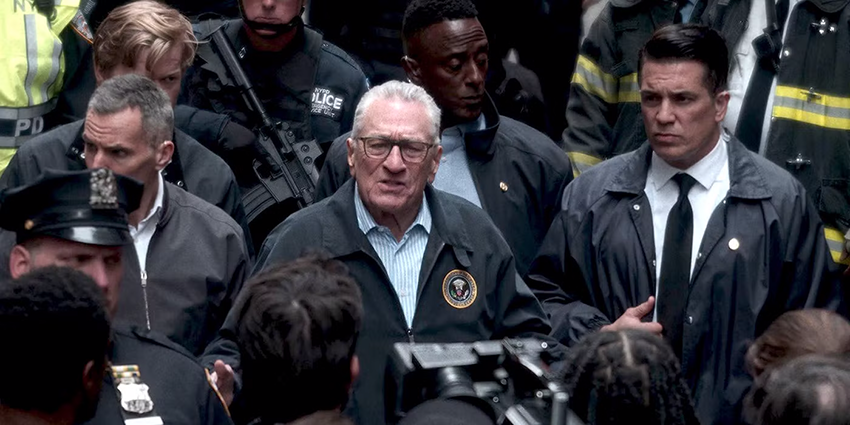Zero Day, Netflix’s latest political thriller, features Robert De Niro as former U.S. President George Mullen, who is called back to service following a catastrophic cyberattack that plunges the nation into chaos. The series delves into the vulnerabilities of a society heavily reliant on technology and examines the profound consequences of a complete technological blackout.
The story begins with a nationwide cyberattack that disrupts energy, telecommunications, and transportation networks, leading to widespread disasters and loss of life. This event serves as a catalyst for the series, highlighting the fragility of modern infrastructure and the potential for technology to be weaponized against the very societies that depend on it. The portrayal of such a scenario is particularly resonant in today’s landscape, where cyber threats are an ever-present concern.
In Zero Day, the blackout’s immediate effects are devastating: communication channels collapse, emergency services are paralysed, public panic escalates as trains crash, plains lose navigation and thousands die. These depictions underscore the extent to which daily life is intertwined with technology and how its sudden absence can lead to societal breakdown. The series effectively captures the chaos and confusion that ensue when familiar systems fail, prompting viewers to consider the real-world implications of such vulnerabilities.
Robert De Niro’s portrayal of George Mullen adds depth to the series, presenting a leader grappling with the moral and practical challenges of navigating a nation through unprecedented turmoil. His character’s struggle reflects broader questions about leadership and accountability in the face of crises that test the resilience of societal structures. The tension between maintaining public order and safeguarding civil liberties becomes a central theme as a Zero Day Commission is set up with unprecedented powers to find those res, mirroring contemporary debates on security and personal freedom.
The show’s creators sought to ground the series in realism, consulting political operatives like Eric Schultz, a former adviser to President Obama, to ensure authentic portrayals of political processes and settings. Schultz’s involvement included advising on set design, dialogue, and character interactions, contributing to the series’ credible depiction of governmental responses to cyber crises. This attention to detail enhances the narrative’s plausibility, making the depicted scenarios more compelling and thought-provoking.
Zero Day also explores the psychological impact of technological dependence. Characters experience a profound sense of disorientation and helplessness as they navigate a world where digital conveniences have abruptly vanished. This aspect of the series invites reflection on how deeply personal and societal identities are intertwined with technology, and how its sudden removal can lead to existential crises and a re-evaluation of human connections and resilience.
What it lacks in depth and specificity in its portrayal of the complex issues at play, it more than makes up for in entertainment value over the six episodes. The Zero Day Commission races to find the person or people responsible before another attack and like all thrillers there is last minute twist that will keep viewers watching till the end.
Zero Day serves as a timely exploration of the potential consequences of a large-scale technological blackout. By dramatizing the immediate and far-reaching impacts of such an event, the series prompts viewers to consider the precariousness of modern society’s reliance on interconnected systems.
It raises pertinent questions about preparedness, resilience, and the ethical dimensions of technological advancement, making it a relevant and thought-provoking addition to contemporary discussions on cybersecurity and societal vulnerability.
Zero Day is available to stream with a Netflix subscription












